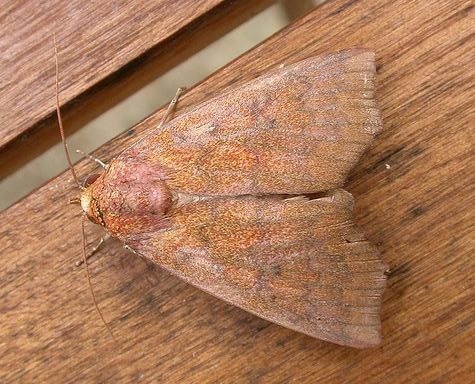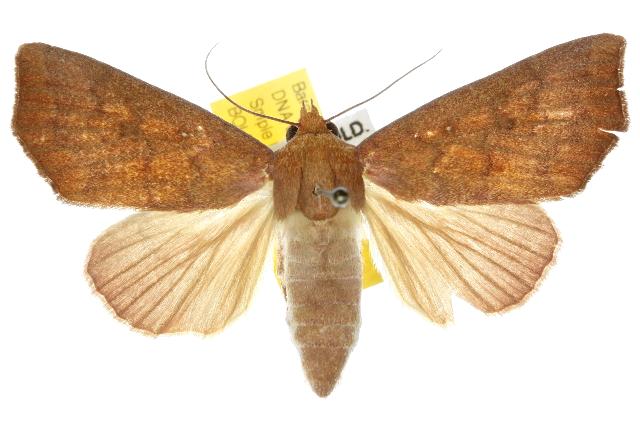
| (previously known as Rusicada nigritarsis) CALPINAE, EREBIDAE, NOCTUOIDEA | (donherbisonevans@yahoo.com) and Stella Crossley |

(Photo: courtesy of
Donald Hobern, Mission Beach, Queensland)

| (previously known as Rusicada nigritarsis) CALPINAE, EREBIDAE, NOCTUOIDEA | (donherbisonevans@yahoo.com) and Stella Crossley |

(Photo: courtesy of
Donald Hobern, Mission Beach, Queensland)
The Caterpillar of this species is grey with black dots, and with thin white lines along the body. The head is yellow. The caterpillar feeds on various species in MALVACEAE, including

The adult moth is brown, with a faint network of grey lines on the forewings. The forewing margins have a well developed cusp at the midway point. The hindwings are plain pale brown darkening toward the margins. The wingspan is about 3 cms.
The species has been found as various subspecies in south-east Asia and the south-west Pacific, including
and including Australia in
Further reading :
Francis Walker,
Noctuidae,
List of the Specimens of Lepidopterous Insects in the Collection of the British Museum,
Part 13 (1858), p. 1006, No. 1.
 caterpillar |  butterflies |  Lepidoptera |  moths |  caterpillar |
(written 12 April 2013, updated 13 March 2017, 17 August 2019, 10 August 2021)